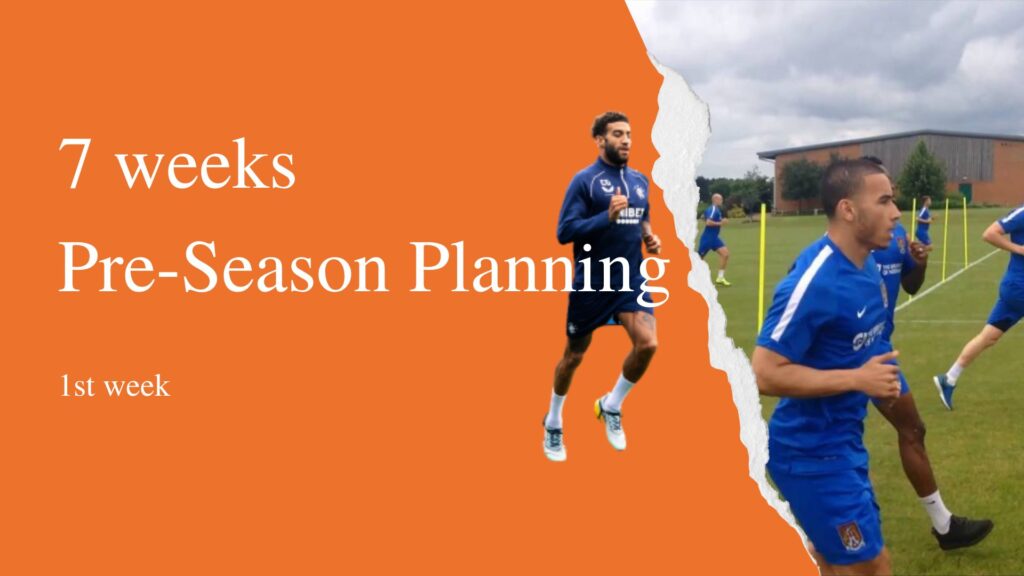What should I do for pre-season training? When do I need to start the pre-season training? What I should work on in each weekly microcycle? Which physical condition components I should include and when? What intensity? These are a few of the questions that a coach has when he is designing the pre-season microcycle. Check below for general guidelines for Pre-Season Football Training Planning.
Sometimes we follow the same programmes we did for previous teams we have managed but this has some risks. Every team and every season cannot be 100% identical to any other team or season.
It is a well-known fact that pre-season football training is one of the most important elements in players’ preparation for the upcoming season or resuming after the break.
A strong preseason can be the difference between silverware and another disappointing year – or even worse, time spent injured on the sidelines. In fact, many athletes credit successful campaigns to the preseason work they completed long before competitions began.
Of course, having a Pre-season training template is very helpful. It saves time and energy. In such cases, the coach should only “read” the team and their current needs and amend the programme accordingly. This will have to do with the drills to be used (different tactical elements, different types of drills, different players in specific positions, etc.)
Pre-season football training period
Preseason football training sessions take place before the start of sports seasons, setting players up for the competition ahead. Preseason sessions and activities are often most hated by athletes since sessions progressively overload them in order to improve their fitness.
- Aims and objectives of pre-season training
Players’ conditioning is also important for making sure they are protected from the risks of injury. Without a preseason period where conditioning is developed over time, injuries could occur if players are jumps directly straight into competition.
By ensuring you are taking the appropriate steps to manage the health of your players, you will positively impact availability during the official games, reduce avoidable injuries, and ultimately give your team a greater chance of success.
Designing a session
It is a fact that designing a correct and efficient pre-season football training session requires effort and specific coaching knowledge. The intensity, the load but also the duration of each exercise, session, and microcycle needs to be taken into account.
The proper design of a pre-season period is essential for a team’s success for the whole season. The training session will establish the core basis in physical condition aspects for the team to compete for 30+ games during the season.
Of course, a player’s performance is affected a lot by many factors such as psychology, motivation, mentality, etc. These are not purely competition factors but are included in the 4 corners model that every training session must have.

General guidelines
- A complete pre-season football training plan consists of 7 weeks with some days having a training session in the morning and one in the afternoon.
- The training duration should not be above 90 minutes
- In a day with two training sessions, in the morning it preferable to concentrate on the physical condition, and in the afternoon in more tactical elements
- The majority of the training sessions should include ball exercises
- The ideal number of friendly games is 6 – 8
- To develop the aerobic endurance capacity the best methods are:
- High intensity – Low intensity continuous running
- Repeated methodology
- Interval training
- The explosiveness it preferable to be trained through football elements using actions from a match-related situation (i.e 4 v 3) with tactical elements
- The strength can be developed through individual programs mainly in the gym. In the first two weeks of the pre-season, a lighter program on the field can be used (exercises using body weight). In order not to lose precious time on the pitch, strength can be trained in the gym before the main training session.
- The long duration and high-intensity training sessions must be followed by proper after session or the next day cooling down techniques (massage, ice therapy, prevention, pool, etc.) but also very good nutrition habits.
- The prevention exercises before every training are essential and is a habit that should be followed during the whole season.
The non-negotiable elements for a pre-season planning
- Have a plan
- Keep players in condition during the off-season
- Monitor performance progression
- Meet the specific individual needs of players
Find here an example for the 1st week of a Pre-season Training plan.

Conclusion
The proper design of a pre-season is crucial for a team’s success. During that period, the coach with his staff will build the player’s physical condition basis. In modern football, fitness is one of the most important aspects, especially for teams who have a full calendar.
Of course, is also a period where the coach will establish the ground guidelines of his playing philosophy. The training for the physical condition should be blended with the tactical training so as to not lose time until the 1st official game.
For pre-season football 7 weeks plan individual and collective exercises check the Coach Voice Academy platform. This is a platform that all football coaches should check.


